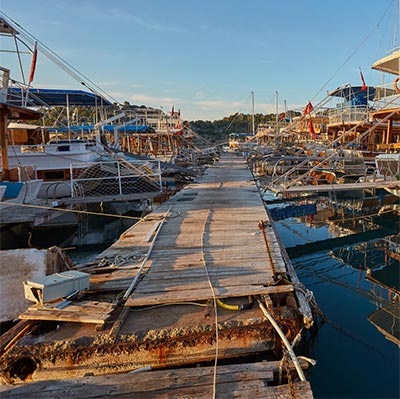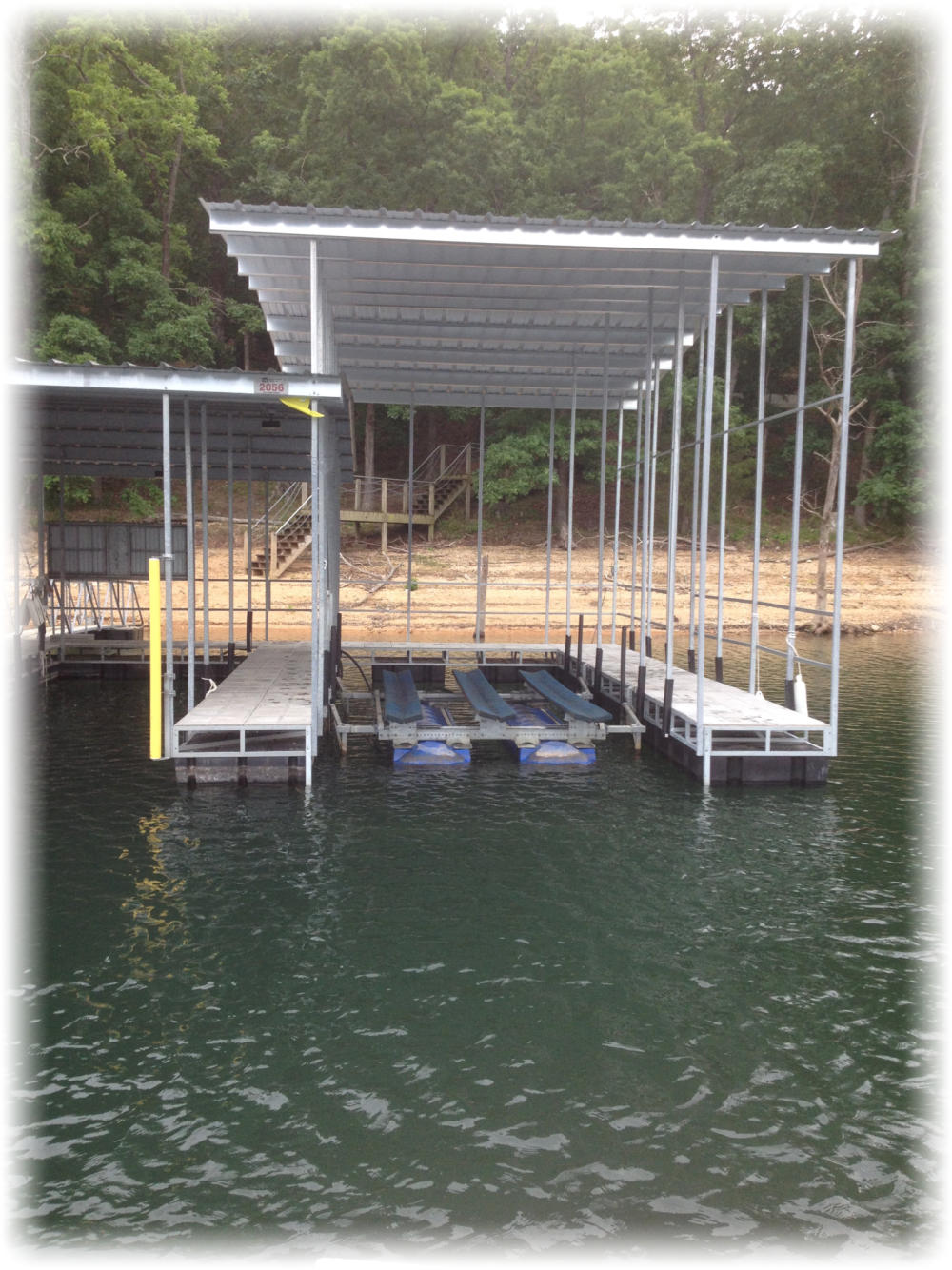Seasonal Preparations: When to Arrange Your Dock Repairs
Seasonal Preparations: When to Arrange Your Dock Repairs
Blog Article
Effective Dock Repair Work Techniques: Ensuring Architectural Integrity
Guaranteeing the structural honesty of docks through efficient fixing methods is vital for the durability and safety of marine facilities. This involves a multi-faceted method beginning with comprehensive examinations utilizing advanced innovations like sonar devices and from another location ran automobiles (ROVs) to find both visible and concealed problems. Consequently, selecting the ideal fixing products, such as corrosion-resistant alloys and composite products, is important for longevity. Architectural reinforcement methods, consisting of the execution of cross-bracing systems and load-distribution plates, play an essential function in mitigating stress factors. The importance of these strategies becomes noticeable when discovering sophisticated repair methods and preventative upkeep techniques.
Assessing Dock Damage
Analyzing dock damage is a crucial first action in guaranteeing the architectural integrity and security of any kind of docking center. This initial assessment includes a thorough evaluation to determine both covert and noticeable problems. Trick aspects to examine include the dock's structure, pilings, outdoor decking, and hardware. Each element has to be inspected for indicators of wear, rot, corrosion, or other forms of degradation that can jeopardize the structural honesty.
Architectural designers or qualified assessors typically carry out these assessments making use of specialized methods and tools. Undersea evaluations could utilize finder devices or from another location operated vehicles (ROVs) to identify submerged damages. Over water, visual examinations are enhanced by utilizing dampness meters and various other diagnostic tools to discover underlying issues not right away noticeable to the nude eye.

Deciding On Fixing Materials
Choosing the appropriate repair work products is an essential action in the dock reconstruction procedure, one that directly influences the durability and efficiency of the fixed structure. Product option need to be driven by variables such as environmental problems, load-bearing needs, and compatibility with existing dock parts. For instance, timber is a traditional choice for anchors due to its natural strength and aesthetic allure. Nonetheless, picking the right kind of wood, such as pressure-treated lumber or normally rot-resistant species like cedar or teak wood, is essential to hold up against water settings.
In addition to wood, composite products are progressively prominent because of their resilience and low maintenance requirements. Composites, generally made from a mix of plastic and timber fibers, provide excellent resistance to rot, pests, and UV damage. For steel docks, selecting corrosion-resistant alloys such as galvanized steel or marine-grade aluminum is necessary to avoid corrosion and make certain architectural honesty in saline water problems.
Epoxy materials and marine-grade sealers are vital for repairing fractures and securing joints, providing a water resistant barrier and improving the dock's general toughness. By meticulously choosing high-grade products, dock repair services can accomplish durable outcomes, therefore guarding versus future deterioration and ensuring safe, reputable use.
Architectural Reinforcement Techniques
Effective structural reinforcement strategies are vital in making sure the stability and long life of dock fixings. This method is specifically effective read this post here for anchors subjected to hefty tons or rough ecological conditions.
One more crucial strategy is the application of fiber-reinforced polymers (FRP) These products offer high strength-to-weight ratios and excellent resistance to rust, making them excellent for reinforcing wood or concrete anchors. FRP can be applied in strips or sheets and bonded with epoxy resins to enhance structural integrity.
Supporting and anchoring systems likewise play a critical duty in structural reinforcement. Cross-bracing, using steel or wood beams, can neutralize side forces, minimizing guiding and movement. Anchoring systems, such as helical piers or driven piles, give a secure structure by transferring tons to deeper, much more stable soil layers.
Finally, the combination of load-distribution plates can aid disperse weight much more equally throughout the dock's surface area, minimizing local stress and anxiety points. These methods jointly guarantee that docks remain robust and risk-free, capable of withstanding the roughness of their operational atmosphere.
Advanced Repair Service Methods

Another sophisticated method entails undersea welding, which allows for repair services to be performed without the demand to dewater the location. This technique is specifically beneficial for resolving structural issues in immersed dock components, guaranteeing minimal disturbance to operations. Improved welding strategies, paired with robot systems, deliver accuracy and dependability, therefore prolonging the life-span of the dock.
Additionally, cathodic security systems are carried out to avoid deterioration in metal dock structures. By using sacrificial anodes or website link impressed existing systems, these strategies effectively reduce the electrochemical procedures that lead to material damage.
Finally, advanced monitoring modern technologies, such as architectural health and wellness surveillance (SHM) systems, supply real-time data on the condition of dock structures. These systems allow positive upkeep and prompt treatments, ultimately making sure the long-term architectural stability of the dock.
Maintenance and Prevention
Upkeep and prevention are basic ideas that underpin the longevity and safety of dock structures. Routine inspections are vital, permitting early discovery of deterioration, prospective weaknesses, and ecological influences. A proactive method, entailing routine look for corrosion, rot, and structural shifts, reduces expensive repair work and extends the dock's functional life.
Preventative steps must consist of applying safety finishes to steel parts to defend against corrosion and utilizing cured timber to resist decay. In addition, making sure correct drain and ventilation can stop water accumulation, which is a common additional hints reason for architectural deterioration. Incorporating high quality materials and adhering to producer standards throughout building and repair work phases also play critical roles in enhancing durability.

Educating employees in dock upkeep finest practices makes certain constant application of precautionary actions. Leveraging technological advancements, such as drones for examinations and sensing units for real-time tracking, can additionally enhance upkeep efforts. By focusing on upkeep and avoidance, dock owners can guarantee structural honesty, functional safety, and cost-effective administration over the dock's life-span.
Final Thought
Finally, preserving the architectural stability of aquatic facilities necessitates detailed dock repair work methods. Complete evaluations using innovative tools uncover both noticeable and concealed problems, while the choice of appropriate repair work materials improves resilience. Applying structural support approaches addresses stress factors effectively. Advanced fixing methods, paired with normal upkeep practices, guarantee the dock remains operational and safe under diverse ecological problems. Embracing these strategies substantially lengthens the life-span and performance of aquatic infrastructure.
Making sure the structural integrity of anchors with effective repair methods is paramount for the long life and safety of aquatic facilities.Selecting the ideal repair products is an essential step in the dock restoration procedure, one that directly affects the long life and performance of the repaired framework.Efficient structural reinforcement techniques are crucial in guaranteeing the stability and durability of dock fixings. By prioritizing maintenance and prevention, dock owners can ensure architectural integrity, functional safety, and cost-effective management over the dock's life-span.
In final thought, keeping the structural integrity of aquatic centers demands detailed dock fixing techniques.
Report this page